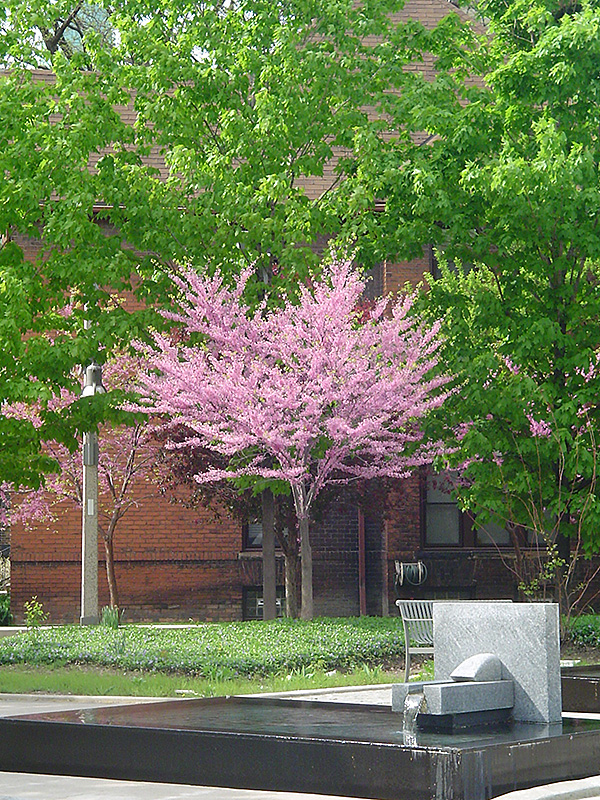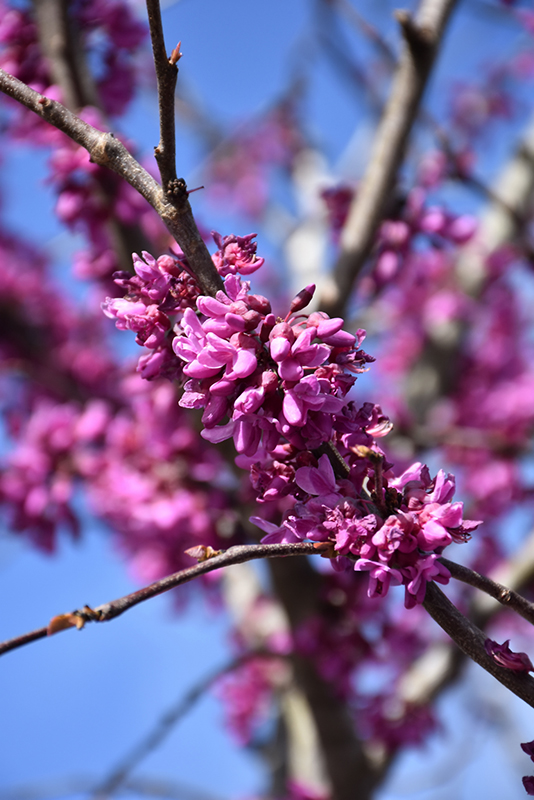Digging deeperPlant Library
Eastern Redbud (tree form)
Cercis canadensis '(tree form)'
Height: 20 feet
Spread: 15 feet
Sunlight:
![]()
![]()
Hardiness Zone: 4
Other Names: Redbud, Judas Tree, Love Tree
Description:
A spectacular spring bloomer, with very showy pink to purple flowers held tightly on bare branches in early spring; somewhat coarse heart-shaped leaves; grown as a single-stem tree form, ideal as a showy spring feature or accent
Ornamental Features
Eastern Redbud (tree form) has rose pea-like flowers along the branches from early to mid spring, which emerge from distinctive fuchsia flower buds before the leaves. It has forest green deciduous foliage which emerges burgundy in spring. The heart-shaped leaves turn buttery yellow in fall.
Landscape Attributes
Eastern Redbud (tree form) is a deciduous tree with a strong central leader and a shapely oval form. Its relatively coarse texture can be used to stand it apart from other landscape plants with finer foliage.
This is a relatively low maintenance tree, and is best pruned in late winter once the threat of extreme cold has passed. It is a good choice for attracting bees to your yard, but is not particularly attractive to deer who tend to leave it alone in favor of tastier treats. Gardeners should be aware of the following characteristic(s) that may warrant special consideration;
- Disease
Eastern Redbud (tree form) is recommended for the following landscape applications;
- Accent
- Mass Planting
- General Garden Use
Planting & Growing
Eastern Redbud (tree form) will grow to be about 20 feet tall at maturity, with a spread of 15 feet. It has a low canopy with a typical clearance of 4 feet from the ground, and should not be planted underneath power lines. It grows at a medium rate, and under ideal conditions can be expected to live for 40 years or more.
This tree does best in full sun to partial shade. It prefers to grow in average to moist conditions, and shouldn't be allowed to dry out. It is not particular as to soil type or pH. It is highly tolerant of urban pollution and will even thrive in inner city environments, and will benefit from being planted in a relatively sheltered location. Consider applying a thick mulch around the root zone in winter to protect it in exposed locations or colder microclimates. This is a selection of a native North American species.
Nursery Notes
In Colorado, it is best to plant this tree in a protected, east or north facing area.
A NetPS Plant Finder tool
This Plant Library is for informational purposes only. We may or may not carry the items listed. During many times of the year, we may carry many more plants in our store than are listed in the Plant Library. Please contact us directly at 303-690-4722 or visit our store for current availability and for assistance.

